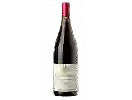
Château de RosnayElégance Fiefs Vendéens Mareuil Rosé
This wine is a blend of 2 varietals which are the Pinot noir and the Gamay noir.
This wine generally goes well with pork, poultry or beef.
Food and wine pairings with Elégance Fiefs Vendéens Mareuil Rosé
Pairings that work perfectly with Elégance Fiefs Vendéens Mareuil Rosé
Original food and wine pairings with Elégance Fiefs Vendéens Mareuil Rosé
The Elégance Fiefs Vendéens Mareuil Rosé of Château de Rosnay matches generally quite well with dishes of beef, veal or pork such as recipes of monkfish with vegetable tagliatelle, milanese osso buco or pork roll with mustard.
Details and technical informations about Château de Rosnay's Elégance Fiefs Vendéens Mareuil Rosé.
Discover the grape variety: Pinot noir
Pinot noir is an important red grape variety in Burgundy and Champagne, and its reputation is well known! Great wines such as the Domaine de la Romanée Conti elaborate their wines from this famous grape variety, and make it a great variety. When properly vinified, pinot noit produces red wines of great finesse, with a wide range of aromas depending on its advancement (fruit, undergrowth, leather). it is also the only red grape variety authorized in Alsace. Pinot Noir is not easily cultivated beyond our borders, although it has enjoyed some success in Oregon, the United States, Australia and New Zealand.
Last vintages of this wine
The best vintages of Elégance Fiefs Vendéens Mareuil Rosé from Château de Rosnay are 2016, 2015
Informations about the Château de Rosnay
The Château de Rosnay is one of of the world's greatest estates. It offers 10 wines for sale in the of Loire Valley to come and discover on site or to buy online.
The wine region of Loire Valley
The Loire Valley is a key wine region in western France. It follows the course of the Loire River on its Long journey through the heart of France, from the inland hills of the Auvergne to the plains of the French Atlantic coast near Nantes (Muscadet country). Important in terms of quantity and quality, the region produces large quantities (about 4 million h/l each year) of everyday wines, as well as some of France's greatest wines. Diversity is another of the region's major assets; the styles of wine produced here range from the light, tangy Muscadet to the Sweet, honeyed Bonnezeaux, the Sparkling whites of Vouvray and the juicy, Tannic reds of Chinon and Saumur.
The word of the wine: Pressing
Mechanical action consisting of pressing the grapes (before fermentation for whites) or the marc soaked in wine (after fermentation for reds).














